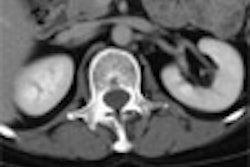WASHINGTON, DC - In an ideal world, patients who could benefit from coronary revascularization would receive that intervention before undergoing some other major noncardiac surgery. But it appears that preoperative cardiac clearance prior to hip fracture repair is mostly a path to poorer outcomes.
That's the experience of practitioners at George Washington University (GWU), who presented their findings this week at the annual meeting of the American Academy of Orthopaedic Surgeons (AAOS). The research was led by a final-year orthopedic surgery resident, Dr. Jonathan Cluett, at the Washington, DC, institution.
Cluett and colleagues looked retrospectively at 108 consecutive patients over age 60 who were treated for acute hip fractures at GWU between 2000 and 2002. Cardiac screening prior to their hip surgery was just a history, physical exam, and electrocardiogram (ECG) for most patients.
However, 20 percent of the patients received further noninvasive cardiac testing, which delayed their surgery by an additional 62 hours on average.
Nineteen patients received echocardiograms or stress testing that delayed surgery by more than two days on average. Just three patients received further intervention such as catheterization, racking up the longest delays of 166 hours on average.
Of the 22 patients receiving additional cardiac clearance, six (22%) experienced major postoperative complications, none of which was cardiac in origin, the researchers reported.
But the impact of delayed surgery was evident: these patients needed an extra day before they began ambulation compared to the ECG-only patients; they also spent an extra 17 hours in the hospital on average.
"In general, noninvasive cardiac testing doesn't change the patient's cardiac risk, whereas delaying the surgery does change their chance of having a poorer outcome," Cluett said.
Among the general statistics cited by Cluett and colleagues, only 25% of patients will make a full recovery following a hip fracture even though nearly all of them will undergo surgery. Some 24% of hip fracture patients over age 50 will die within one year.
But the studies showing that delayed surgery leads to poorer outcomes have appeared primarily in the orthopedics literature, Cluett said, which may leave cardiologists and internists in the dark about the importance of speedy cardiac clearance.
In addition, Cluett said, the physicians responsible for preoperative cardiac clearance at George Washington University apparently weren't following the guidelines established by the American College of Cardiology and the American Heart Association.
"It seemed that the patients who were getting this testing were pretty much just older, and that's not a very good clinical screening criteria for determining which patients should have the noninvasive cardiac screening," Cluett said.
"What we found was that the people making the decisions were tending to use these tests more to determine the general overall cardiac health of the patient," Cluett said. "That's not really the purpose, in this setting, of these tests."
"These tests should be very specifically designed to determine which patients need coronary revascularization prior to their hip fracture treatment, because we know the patient's going to need treatment for their hip fracture," he continued.
As an alternative to extended cardiac clearance, orthopedic surgeons could simply presume that all hip fracture patients may have some level of cardiac risk when they undergo surgery, Cluett said.
"There's no reason why we can't perform monitoring, give them preoperative beta blockade medications -- some simple measures that are done on patients who are thought to be of low to moderate cardiac risk," Cluett said. "But we don't need to delay their surgery by getting this testing."
By Tracie L. Thompson
AuntMinnie.com staff writer
February 23, 2005
Related Reading
MSCT beats x-ray in diagnosing TKA osteolysis, March 15, 2004
MR categorizes acute hamstring injuries for pre-op assessment, November 29, 2003
Copyright © 2005 AuntMinnie.com



















